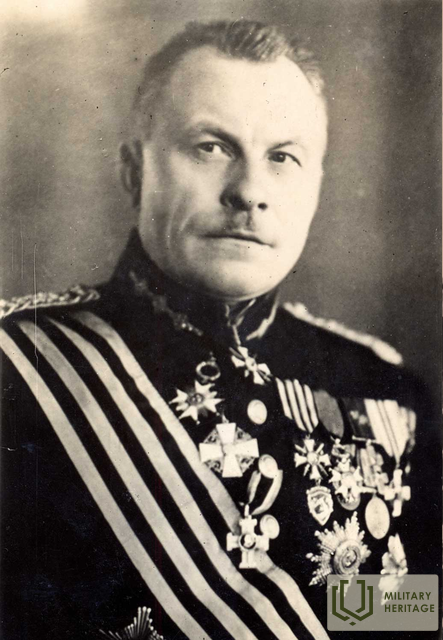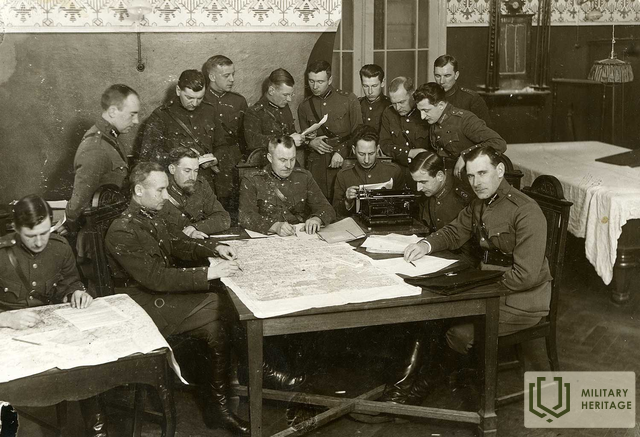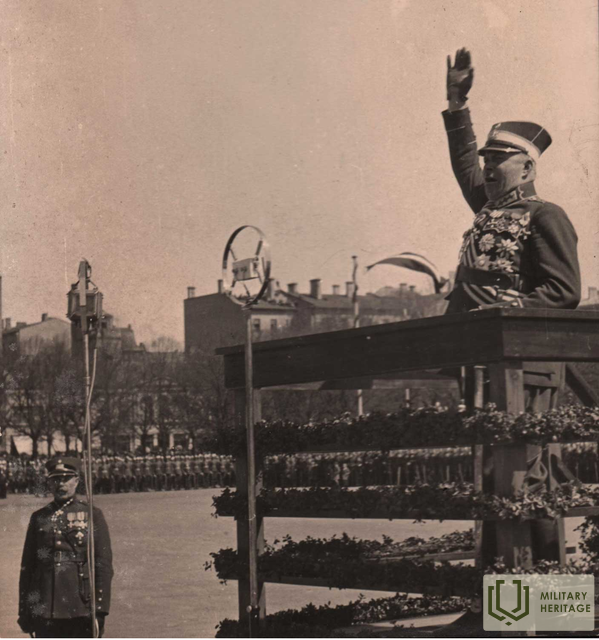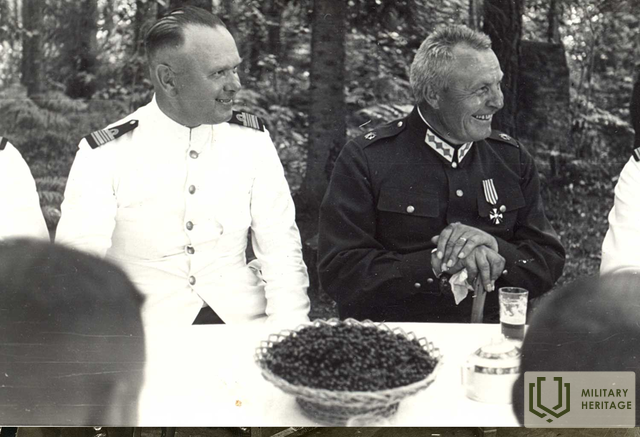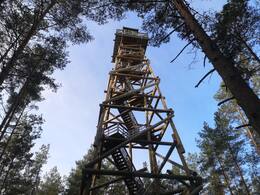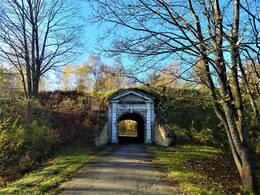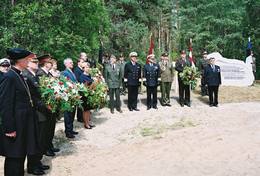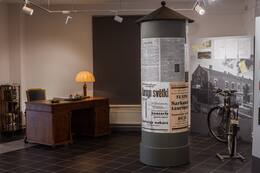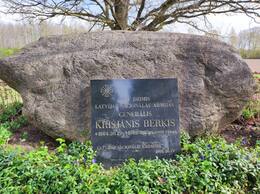General Krišjānis Berķis
I World War I, I Wars of Independence, IV Soviet Occupation
Krišjānis Berķis was born on April 26, 1884 in Bērzukrog, Īslīce parish. In 1903, after graduating from Bauska city school, Kr. Berķis entered the Vilnius Junkers School, which he graduated after 3 years as a sub-lieutenant. He served in the 2nd Finnish Rifle Regiment in Helsinki. In 1909, Kr. Berķis received the rank of lieutenant, in 1913 – staff captain, and in January 1917 – captain.
In July 1917, Kr. Berķis received the rank of lieutenant colonel and became the commander of the 6th Tukums Latvian Rifle Regiment battalion. After the October Revolution, Kr. Berķis was removed from office and imprisoned for a short time, but after his release he was still forced to hide from the Bolsheviks in both Finland and Russia, until finally returning to Latvia in the spring of 1919.
On March 21, 1919, Kr. Berķis, already as a lieutenant colonel, joined the armed forces of the Latvian Provisional Government and became the commander of the reserve battalion (later the 2nd Cēsis Infantry Regiment), and from August – the commander of the Latgale Division. In October 1919, Kr. Berķis received the rank of colonel.
In April 1920, Kr. Berķi was elected a deputy of the Constituent Assembly, but he refused the mandate. In 1925, Kr. Berķi was awarded the rank of general. Until 1934, he worked in the Administrative Department of the Army Headquarters, was the commander of the Vidzeme Division and the chief of the Riga garrison. In November 1934, Kr. Berķi was appointed commander of the army, and on April 5, 1940 – Minister of War.
The magazine “Kadets”, No. 4, April 1, 1936, in an article about General Krišjānis Berķis, wrote: “[..] we always see the general as an outstanding example of vigor and energy, a tireless private who knows and understands the life of soldiers and its circumstances well. Helpful and sincere, always fatherly caring and responsive to his subordinates — a true Latvian man of the heart — such our direct superior and leader of life has impressed himself not only in the hearts of his closest soldiers, but in the hearts of all Latvian soldiers. The authority and respect of the general, which the soldiers have for him, is not based on strictness and severity, is not based on the rule of law and the letter, but the foundations for his authority and respect — and these foundations are granite-hard — were laid by the turbulent time of our people’s freedom struggle.”
On June 20, 1940, Kr. Berķi was discharged from service, arrested in July, and on August 9, together with his son and daughter-in-law, he was deported to Russia, where he was imprisoned in June 1941. He died on July 29, 1942, in the Perm prison hospital.
More information sources
Latvian War Museum. General Krišjānis Berķis. Available: http://www.karamuzejs.lv/lv/Izstades/generali/generalis_BerkisKrisjanis.aspx [accessed 06.05.2021].
Related objects
Bumbu hill firewatch tower
A memorial site for the Latvian Freedom Struggles. During the Bermontiades in November 1919, the command post of the Latgale Division led by Krišjānis Berķis was located here. The 6th Riga Infantry Regiment, attacking from Bumbu Hill, captured Sudrabkalniņš.
Daugavgrīva Fortress
Daugavgrīva Fortress (entry from Birzes street) is located on the Daugavgrīva Island where Buļļupe river joins the Daugava river. The fortress was built in the 17th century to defend from enemies moving in the direction of Riga, which was an important administrative, trade and production centre. Later it became the main fortification of the Latvian Army coastal defence with several support points. This defensive fortification system is one of the most valuable objects of Latvia's military heritage. This fortress has witnessed Latvian military history. For example, during the Crimean War (1853-1856) Latvian and Estonian gunboat crews were trained here. The main objective of these units was to protect local ports and the coast from attacks by the British navy. During World War I Daugavgrīva militiamen companies were formed here. These were the first Latvian combat units, which came even before the Latvian Riflemen. Nowadays it is possible to see the territory of the fortress. ‘Komētforts’ and the Seaside Nature Park are located nearby and Mangaļsala fortifications are on the other side of the Daugava river.
Memorial stone to the Latvian and Estonian soldiers who fell in the Battle of Cēsis near Rauna
Located in Priekuļi parish, on the side of the Cēsis–Valmiera highway, near the bridge over the Rauna River.
A memorial stone with a granite memorial sign made by stonemason Voldemārs Koltovs to the soldiers who fell in the Battle of Cēsis can be viewed.
Opened in 2004, when the 85th anniversary of the Battle of Cēsis was celebrated.
A memorial stone to the 110 Estonian and 44 Latvian soldiers who fell in battle on the banks of the Rauna and Gauja rivers.
In the battles near Rauna and Gauja, the 6th Regiment of the 3rd Estonian Division (commander K.Tallo), the 3rd Regiment (commander J.Krūss) and the 2nd Cēsis Regiment of the North Latvian Brigade (commander K.Berķis) fought heroically.
Exhibition "Latvian Army in Pļaviņas in the 20th Century."
Located at Odzienas Street 2, Pļaviņas.
The permanent exhibition "Latvian Army in Pļaviņas in the 20th Century" is on display.
The building in Pļaviņas, at Odzienas Street 2, has a long history – from the time when the Stukmaņi wholesaler Hugo Apeltofts began active economic activity there, thus contributing to the development of the city of Pļaviņas, to the moment when the headquarters of the Latvian Eastern Front was established here during the War of Independence. In 1919, it was from Pļaviņas that the operations of Latvian army units against the Red Army in Latgale were led.
In 1934, a memorial plaque was unveiled near this house with the inscription: “In 1919, the Eastern Front headquarters was located in this house, and here General Jānis Balodis assumed the supreme command of the Latvian National Army.” The Soviet government removed and destroyed it in 1940, but on June 16, 1990, with the support of the Pļaviņa branch of the Latvian National Liberation Army, it was restored.
Now, near the former headquarters building, there is a memorial stele dedicated to the 15 knights of the Lāčplēsis War Order born in the Pļaviņa region, and an exhibition "The Latvian Army in Pļaviņa in the 20th Century" has been created inside the premises, which tells about the events during the Freedom Struggles, the activities of the headquarters of the 3rd Latgale Division of the Latvian Army in Pļaviņa, and also provides an insight into the life stories of the knights of the Lāčplēsis War Order.
Not far from the exhibition building is the Latgale Division Headquarters building, which was built in 1913 as the Stukmanu liqueur factory by Count Teodors Medem. In 1919, it was taken over by the P. Stučka regime, where it had also established a prison. After the Bolsheviks were expelled, the building was taken over by the Latvian Army in 1925, which housed the Latgale Division Headquarters. 10 generals and other officers of the Latvian Army spent their military careers in this building. In 1940, the building was taken over by the Red Army. In the post-war years, it housed a school, as well as the municipality. Around 1970, the building began to be used by the production association “Rīgas Apērbs”.
Visiting the exhibition must be booked in advance by calling T. 28442692.
Memorial site of General K. Berkis
A monument to General Krišjānis Berķis (1884 - 1942) was erected on the site of his birthplace near an oak tree. The monument was erected by the Latvian National Soldiers' Association at its own expense on April 26, 1998. Kr. Berķis was a general of the Latvian Army, commander of the Latvian Riflemen, fought in World War I and the Latvian War of Independence. Cavalier of the Lāčplēsis War and Three Star Orders. Commander of the Latvian Armed Forces, Minister of War of Latvia.
Krišjānis Berķis was born on April 26, 1884 in Bērzukrog, Īslīce parish. In 1903, after graduating from Bauska city school, Kr. Berķis entered the Vilnius Junkers School, which he graduated after 3 years as a sub-lieutenant. He served in the 2nd Finnish Rifle Regiment in Helsinki. In 1909, Kr. Berķis received the rank of lieutenant, in 1913 – staff captain, and in January 1917 – captain. In July 1917, Kr. Berķis received the rank of lieutenant colonel and became the battalion commander of the 6th Tukums Latvian Rifle Regiment. After the October Revolution, Kr. Berķis was removed from office and imprisoned for a short time, but after his release he was still forced to hide from the Bolsheviks in both Finland and Russia, until finally returning to Latvia in the spring of 1919. On March 21, 1919, Kr. Berķis, already as a colonel - lieutenant, joined the armed forces of the Provisional Government of Latvia and became a commander of a reserve battalion (later the 2nd Cēsis Infantry Regiment), and from August - the commander of the Latgale Division. In October 1919, Kr. Berķis received the rank of colonel. In April 1920, Kr. Berķis was elected a deputy of the Constituent Assembly, but he refused the mandate. In 1925, Kr. Berķis was awarded the rank of general. Until 1934, he worked in the Administrative Department of the Army Headquarters, was the commander of the Vidzeme Division and the chief of the Riga garrison. In November 1934, Kr. Berķis was appointed commander of the army, and on April 5, 1940 - the minister of war. On June 20, 1940, Kr. Berķi was discharged from service, arrested in July, and on August 9, together with his son and daughter-in-law, was deported to Russia, where he was imprisoned in June 1941. He died on July 29, 1942, in the Perm prison hospital.
Related stories
Ball Mountain
Bumbu Hill is a high hill in the Bolderāja dunes, Kleistu Forest, Riga. A memorial site for the Latvian Freedom Struggle. During the Bermontiades in November 1919, the command post of the Latgale Division led by Krišjānis Berķis was located here. The 6th Riga Infantry Regiment, attacking from Bumbu Hill, captured Sudrabkalniņš. A memorial plaque was installed in 1939, which was destroyed in 1969. The memorial site was restored in 1989.




